Correct pruning of the Kalanchoe bush
An important procedure in the care of the Kalanchoe is the formation of the crown. Pruning Kalanchoe includes pinching the top, removing wilting peduncles and old lateral shoots. The plant looks more attractive in the form of a compact bush with a rounded crown.
Why trim Kalanchoe?
The Kalanchoe flower is characterized by rapid growth of shoots. If you do not participate in the formation of the plant crown, then it takes on a form that is far from ideal.
Pruning Kalanchoe has several purposes.
- Pinching of the upper shoots to form a beautiful crown and to maintain a compact, rounded shape. The top of the plant actively stretches up in the spring. It needs to be pinched, then the bush will grow in breadth and acquire a decorative appearance.
- When the bush is rejuvenated, old shoots are removed, which eventually shed the lower leaves. Such parts of the flower become unattractive.
- Timely removal of wilted flower stalks is necessary to prevent infestation and for lush flowering.
- Pruning to maintain the health of the bush, as a result of which the sap is evenly distributed over all the branches and leaves. A healthy plant with fleshy leaves is formed, resistant to diseases.
There are about 200 varieties of Kalanchoe, which react differently to crown formation.
Advice
Kalanchoe varieties Blossfeld and Kalandiva calmly tolerate pruning. Their crown can be safely formed without fear of harming the plant. Some hybrids with yellow and white inflorescences react painfully to pruning, so only the tops of them are pinched.
Recommendations and rules for the formation of a bush
Timely and correct pruning promotes the growth of a beautiful Kalanchoe bush with lush inflorescences. The process of forming a crown has nuances that you need to know.
- Before starting the procedure, the plant variety is determined, since the pruning method will depend on it.
- You can not cut off a newly acquired culture, give it time to acclimatize in new conditions.
- It is not worth pruning during the winter season when the flower is at rest.
- You need to use a sharp utility knife or pruner. Disinfect the tool before use.
- Do not pick off the leaves and inflorescences with your hands - the plant will be damaged and begin to fade.
- It is necessary to trim Kalanchoe in the morning or evening hours, avoiding the effect of bright sunlight on the culture during the procedure.
- Treat the cut points with crushed charcoal.
- Do not pinch the plant immediately after transplanting. Rooting and adaptation takes 2–3 weeks.
- It is not necessary to cut off Kalanchoe with signs of diseases and pests. They begin to form a bush no earlier than 15 days after the complete destruction of insects.
Initial and preventive pruning
The first pruning of the plant is done in the spring. It is worth remembering the basic nuances of the initial pruning at home.
- In the spring, a month after the Kalanchoe wakes up, you need to remove new, young shoots with leaves. To begin with, cut off two or three leaves on each shoot.
- After pruning, do not place the plant on a southern or southeastern windowsill, where exposure to bright sunlight is possible. Kalanchoe in such a place will begin to grow intensively, the shoots will quickly stretch out. The bush will lose its shape.
Preventive pruning is done as the flower grows. It is used for several reasons.
- In places where shoots and leaves are cut from the buds, new shoots appear over time in the leaf axils. Two or three sheets are also cut from them.This process can be continued until autumn, until the crown of the required shape is formed.
- To prevent the appearance of stem rot and other diseases, all damaged leaves and broken shoots are removed from the plant.
- As the Kalanchoe grows, old leaves are discarded and its base is bare. This spoils the appearance of the bush, and also interferes with the growth of young shoots. Therefore, the old parts of the flower must be gradually removed and thus rejuvenate the plant.
- In the summer season, the top of the plant will actively stretch upward and disrupt the shape of the bush. It is pinched to stimulate the growth of young lateral shoots.
Advice
Apical shoots up to 10 cm long are used for plant propagation. Cuttings and leaves of Kalanchoe have a high survival rate. They can be left in a glass of water to form roots, as well as planted in prepared soil for rooting.
Removing shoots after flowering
Kalanchoe flower stalks are formed during short daylight hours. Therefore, flowering begins at the end of winter and continues throughout the spring. Some hybrid varieties may re-bloom in the fall, after which they need a dormant period.
If the Kalanchoe in late spring continues to grow its green mass and is not going to bloom, then pruning is carried out to stimulate flowering. To do this, remove 3-4 upper leaves on each shoot, so that the plant begins to grow in breadth and lay flower stalks.
After flowering, it is important not to let twigs with crumbling petals dry completely. Pinch the peduncles immediately after wilting. In the places of pruning, buds with new buds appear, and space is also made available for new shoots with leaves.
Upon completion of pruning after flowering, you need to organize a rest for the plant. Conditions of detention during the rest period:
- rare watering - once every 3 weeks;
- dark place, without sunlight;
- low air temperature - up to +16 °
Two months after the rest, the Kalanchoe begins to grow actively.
Advice
Shoots with flowers after their wilting, it is better to remove almost at the root, so as not to provoke rotting of the buds and the plant itself.
Pruning the Kalanchoe bush can be easily performed by both experienced and novice growers. Timely pinching of the top, removal of peduncles and damaged shoots is a condition for the growth of a healthy and lush crown of the Kalanchoe.
A well-formed bush has a rounded shape. Its shoots are evenly covered with foliage, buds with delicate petals are visible above the top.
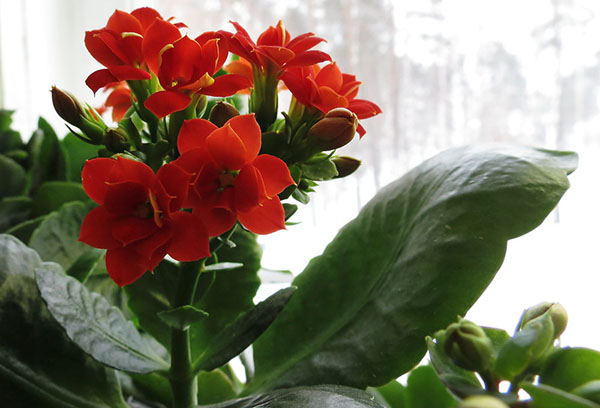
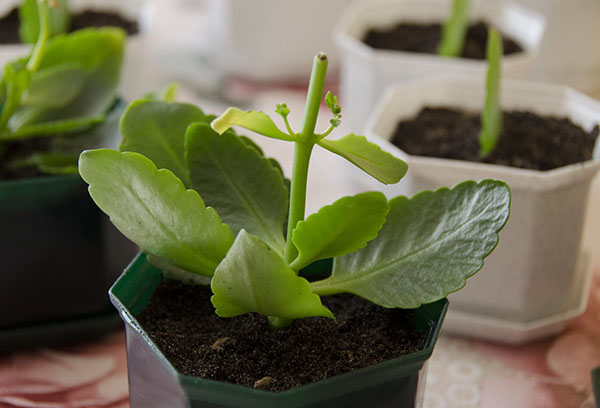
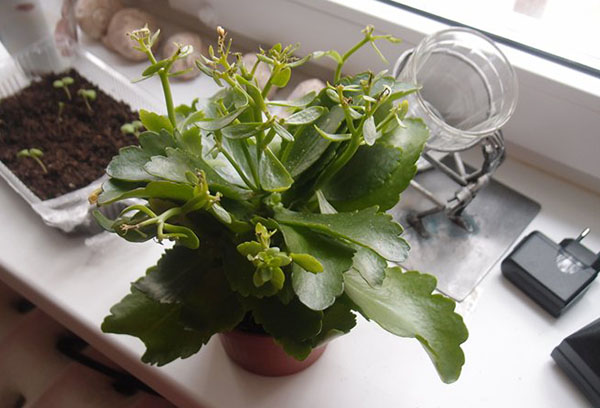
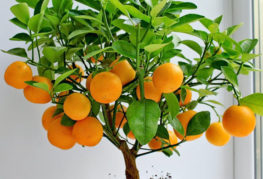
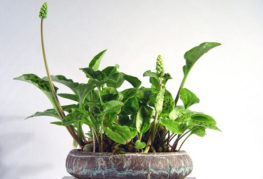
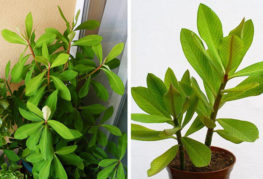
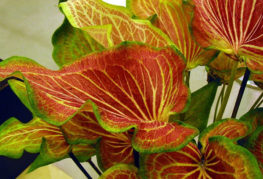
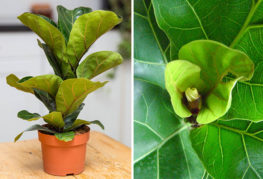
and will be published shortly.